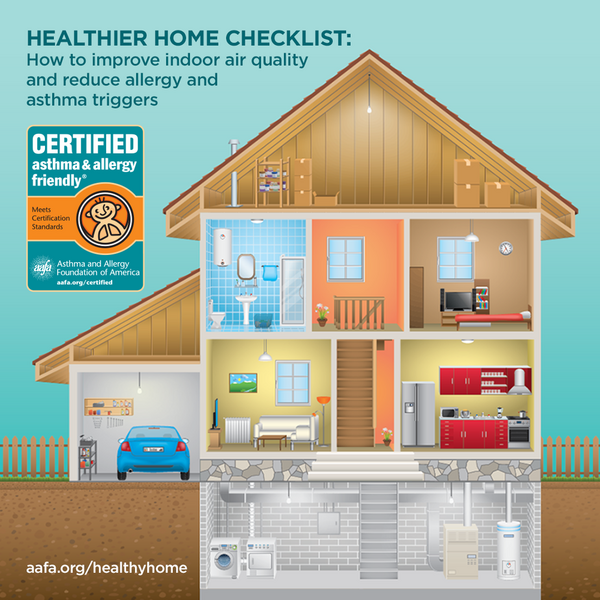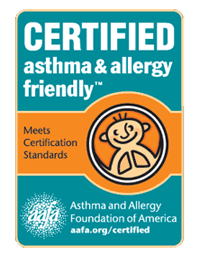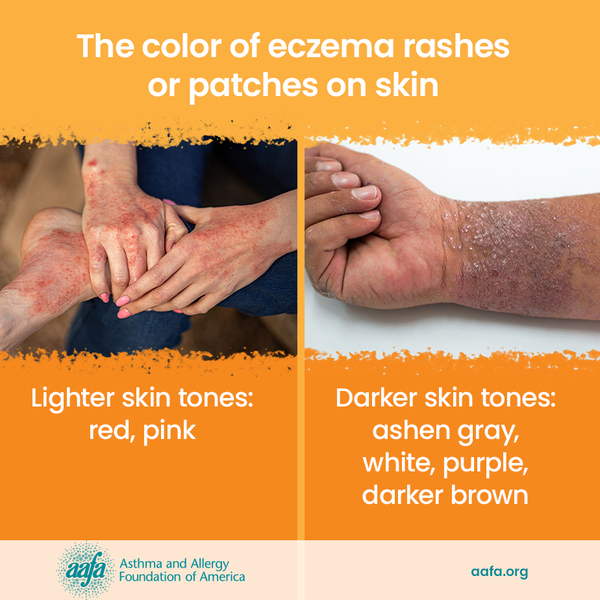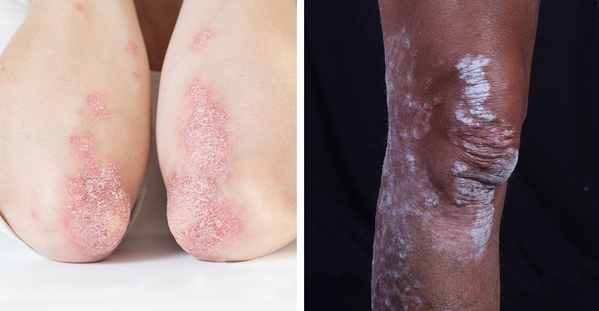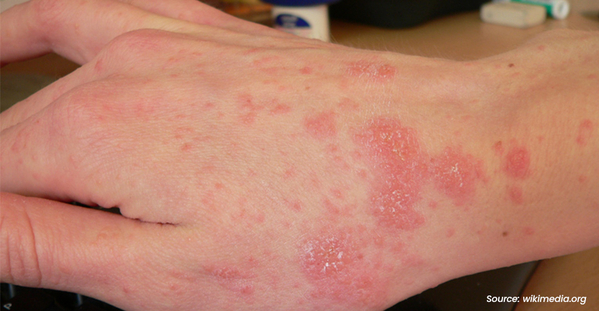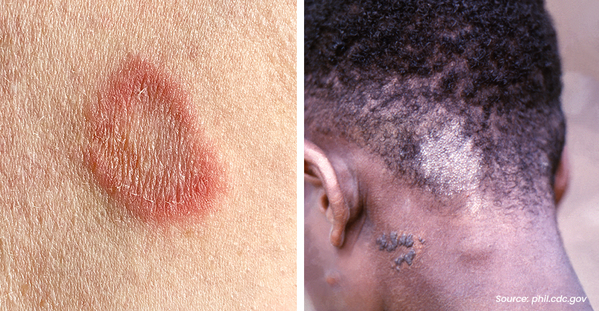Chronic rhinosinusitis is a common medical condition that affects 5-12% of adults.1 Around 20 to 30% of people with chronic rhinosinusitis have nasal polyps.2,3 Nasal polyps associated with type 2 inflammation, which is also linked to asthma, allergic rhinitis (hay fever), atopic dermatitis (eczema), food allergies, eosinophilic esophagitis (EoE).4
Nasal polyps can have a major impact on quality of life. They can affect sleep, the ability to do daily activities, and cause anxiety and depression. They can also cause safety concerns because they can affect a person’s ability to smell.
The Asthma and Allergy Foundation of America (AAFA) studied the impacts of living with nasal polyps in a report titled, Life with Nasal Polyps: The Patient Experience and Opportunities to Improve Care in the U.S.
What Are Nasal Polyps?
Nasal polyps are small growths on the lining inside the nose or sinus cavities. They are not cancer. They are shaped like hanging grapes or teardrops. Nasal polyps are usually soft and painless. They can be in both sides of the nasal cavity. Also, they can look different from normal nasal tissue.
Nasal polyps are also called:
- Chronic rhinosinusitis with nasal polyps (CRSwNP)
- Nasal polyposis
- Nasal polyp syndrome
As part of our research, we interviewed people with nasal polyps to understand the patient experience. Below, you’ll hear from Tom, Norah, Teresa, Leo, Tamara, and Georgia* about how their experiences line up with some of the key findings of our report.
Diagnosis Can Take a Long Time
For many people, it can take months, or even years, to get a nasal polyps diagnosis. Tom, who was recently diagnosed with nasal polyps, described having symptoms for months before diagnosis.
“For some months I had some nasal congestion issues,” Tom said. “And I really wasn't too happy with the doctor's response. I ended up in the hospital [and] had an ENT say I had a head full of polyps.”
For some people, getting a formal diagnosis can take years. Georgia was diagnosed with nasal polyps after having symptoms and seeing multiple health care providers for years with no relief.
“Before my diagnosis I just had issues with allergies,” recalled Georgia. “Every season it started out with me having sinus infections real bad. So once I started getting sinus infections and I knew it was seasonal, I went to an allergist. From the allergist, I started taking allergy shots. I did that for about a year, and I felt like my allergies weren't getting any better. So then I started having issues with asthma … then it got to the point where I was going back and forth to the hospital, to the ER. Then I decided from there to go to an ENT [who diagnosed me with nasal polyps].”
Nasal Polyps Can Impact Quality of Life
Nasal polyps can have physical impacts like congestion, stuffy and runny nose, and loss of taste or smell. They can also impact mental, social, and emotional health. Teresa, who has had chronic sinus infections as a result of her nasal polyps, described the impact on social life and relationships.
“It impacts your life,” Teresa said. “You have to change plans with friends if you have a sinus infection, and they get worse and worse. You’re constantly altering your life, family events, [you] just lose your energy, and they get harder to fight.”
Leo, a college student, also detailed the impact on school and physical activities.
“I swam before,” Leo said. “I can't really do that anymore just because water goes up in [my nose] and doesn't come back out. It doesn't drain. And so I end up with a sinus infection … There have definitely been times where I’m at work or I’m in class, and I can feel a bad one coming on that I have to just buckle down and know that I’m going to go take a nap or something after.”
The impacts on smell and taste can also be dangerous in some cases. Georgia described times when she couldn’t smell spoiled food or burning in the kitchen.
“I would eat foods and not know if they were spoiled or not,” Georgia said. Like milk, you don't know it's not good, especially if you can't taste or smell it. I could even remember a point where I was in my room, I had put on dinner. And I was sitting on my bed and the alarms went off in the house, and all of a sudden I started seeing white smoke…and then I noticed my throat was feeling a little funny, because I was inhaling the smoke, but I couldn't even taste it or smell it.”
Access to Effective Treatments for Nasal Polyps Can Be Challenging
Nasal polyps can be treated with medicines and surgery. For many of the people we interviewed, getting access to these treatments was a challenge.
Norah, who has managed her nasal polyps well through budesonide nasal sprays, talked about the challenges of getting insurance to approve her prescription.
“The cost is going up,” said Norah. “I'm in the middle of a fight with Medicare. They denied me once, but you can appeal. So, I'm in the middle of an appeal process to get the tier lowered on that drug … And so now I have to ask [my asthma specialist’s] office to reapply. Otherwise, I’m looking at between $80 and $120 a month just for the budesonide because it's a tier 4 drug under Medicare. They denied it because the FDA doesn't see the need for using it that way.”
Tom, who qualified for a biologic treatment for nasal polyps, described the difficult process to get the treatment.
“Getting that prescription was an incredible odyssey all in itself,” said Tom. “Getting it approved or not approved and getting the specialty pharmacy to deliver it … And I'd have to call them every couple of weeks to go through this whole rigamarole all over again. It was not fun.”
Challenges with accessing treatments (especially newer, more expensive options) can be different for everyone. Factors like your insurance provider and plan can play a big role in accessing treatment.
Some people we interviewed also had trouble getting information about surgery.
“I wasn't offered surgery, surgery was never an option,” said Tamara. “I go to my ear nose and throat doctor, [and they say] 'Okay, you look good, you're doing okay.' Surgery was never on the table.”
For others who had surgery to remove their nasal polyps, they often had to try medicines first or do surgeries more than once. And for some people, recovery after surgery can be challenging.
Leo described his experience with surgery: “I got surgery because the drugs didn't work. And the surgery recovery, at least for a couple of [the surgeries], was a pain... two to three weeks of a lot of bleeding and junk coming out, just because of the large amount of stuff that was in there that they had to remove.”
Nasal Polyps Can Impact Quality of Life
Nasal polyps can have physical impacts like congestion, stuffy and runny nose, and loss of taste or smell. They can also impact mental, social, and emotional health. Teresa, who has had chronic sinus infections as a result of her nasal polyps, described the impact on social life and relationships.
“It impacts your life,” Teresa said. “You have to change plans with friends if you have a sinus infection, and they get worse and worse. You’re constantly altering your life, family events, [you] just lose your energy, and they get harder to fight.”
Leo, a college student, also detailed the impact on school and physical activities.
“I swam before,” Leo said. “I can't really do that anymore just because water goes up in [my nose] and doesn't come back out. It doesn't drain. And so I end up with a sinus infection … There have definitely been times where I’m at work or I’m in class, and I can feel a bad one coming on that I have to just buckle down and know that I’m going to go take a nap or something after.”
The Need for More Nasal Polyps Support and Resources
Our report highlighted a need for more support and resources for nasal polyps. Tamara, who was diagnosed at age 14, described frustrations in the education she received from her health care provider when she was first diagnosed.
“Especially when you're talking to a 14-year-old, the big thing is compliance,” said Tamara. “And if you don't explain why compliance is important, at some point, they’re going to get tired of doing things. [They] get tired of using nasal sprays and stop because they don’t understand what can happen if they don’t. And he never bothered to explain all of that. He just said, ‘You need to take it, and it may help your ear problems,’ but that was it. He never went into details.”
As such, she explained how doing her own research as a nurse practitioner helped her learn more about nasal polyps.
“Once I became a nurse, I researched it myself,” Tamara recalls. “Sometimes you have to do your own research and be your own advocate. So that’s pretty much what I did … I was able to understand things to the point where I was better able to ask questions and get the answers that I needed.”
Teresa also talked about how important it is to raise awareness about nasal polyps among health care providers.
“I just wish more local allergists were aware,” Tamara said. “For a time, I was just seeing an allergist and a pulmonologist to treat the allergy and asthma because I had dealt with other allergists, and no one was helping … So I wish there was more training in polyps and awareness of that. I don’t feel like every allergist and every ENT is aware.”
There is also a need for more education and awareness for people with nasal polyps. Norah spoke about the need for more information on day-to-day management.
“I would just love more information. Other than what I’m doing, is there anything I can do to keep these from growing back or keep them under control? I guess it would be just more ways of controlling and keeping them from coming back.”
Georgia also stressed the importance of raising awareness among caregivers and loved ones.
“They’re looking like, ‘Huh? Polyps? I’ve heard of cancerous polyps, but not nasal polyps.’ And then you got to go through the spiel and be the doctor and break down things and give people terminologies and stuff, and they’re still lost.”
How AAFA Is Using These Real-Life Perspectives to Support our Community
Living with nasal polyps can be frustrating. We heard from a lot of people about the challenges of getting the right diagnosis, effective care, and ongoing support. AAFA will use these stories and experiences to create resources and programs for people with nasal polyps.
Read the report

The Life with Nasal Polyps report was developed independently by AAFA and made possible by support from Sanofi and Regeneron.
*Names have been changed for privacy.
References
1. Dietz de Loos, D., Lourijsen, E. S., Wildeman, M. A. M., Freling, N. J. M., Wolvers, M. D. J., Reitsma, S., & Fokkens, W. J. (2019). Prevalence of chronic rhinosinusitis in the general population based on sinus radiology and symptomatology. Journal of Allergy and Clinical Immunology, 143(3), 1207–1214. https://doi.org/10.1016/j.jaci.2018.12.986
2. Stevens, W. W., Schleimer, R. P., & Kern, R. C. (2016). Chronic Rhinosinusitis with Nasal Polyps. The Journal of Allergy and Clinical Immunology: In Practice, 4(4), 565–572. https://doi.org/10.1016/j.jaip.2016.04.012
3. Benjamin, M. R., Stevens, W. W., Li, N., Bose, S., Grammer, L. C., Kern, R. C., Tan, B. K., Conley, D. B., Smith, S. S., Welch, K. C., Schleimer, R. P., & Peters, A. T. (2019). Clinical Characteristics of Patients with Chronic Rhinosinusitis without Nasal Polyps in an Academic Setting. The Journal of Allergy and Clinical Immunology: In Practice, 7(3), 1010–1016. https://doi.org/10.1016/j.jaip.2018.10.014
4. Bachert, C., Hicks, A., Gane, S., Peters, A. T., Philippe Gevaert, Nash, S., Horowitz, J. E., Sacks, H., & Jacob-Nara, J. A. (2024). The interleukin-4/interleukin-13 pathway in type 2 inflammation in chronic rhinosinusitis with nasal polyps. Frontiers in Immunology, 15. https://doi.org/10.3389/fimmu.2024.1356298











